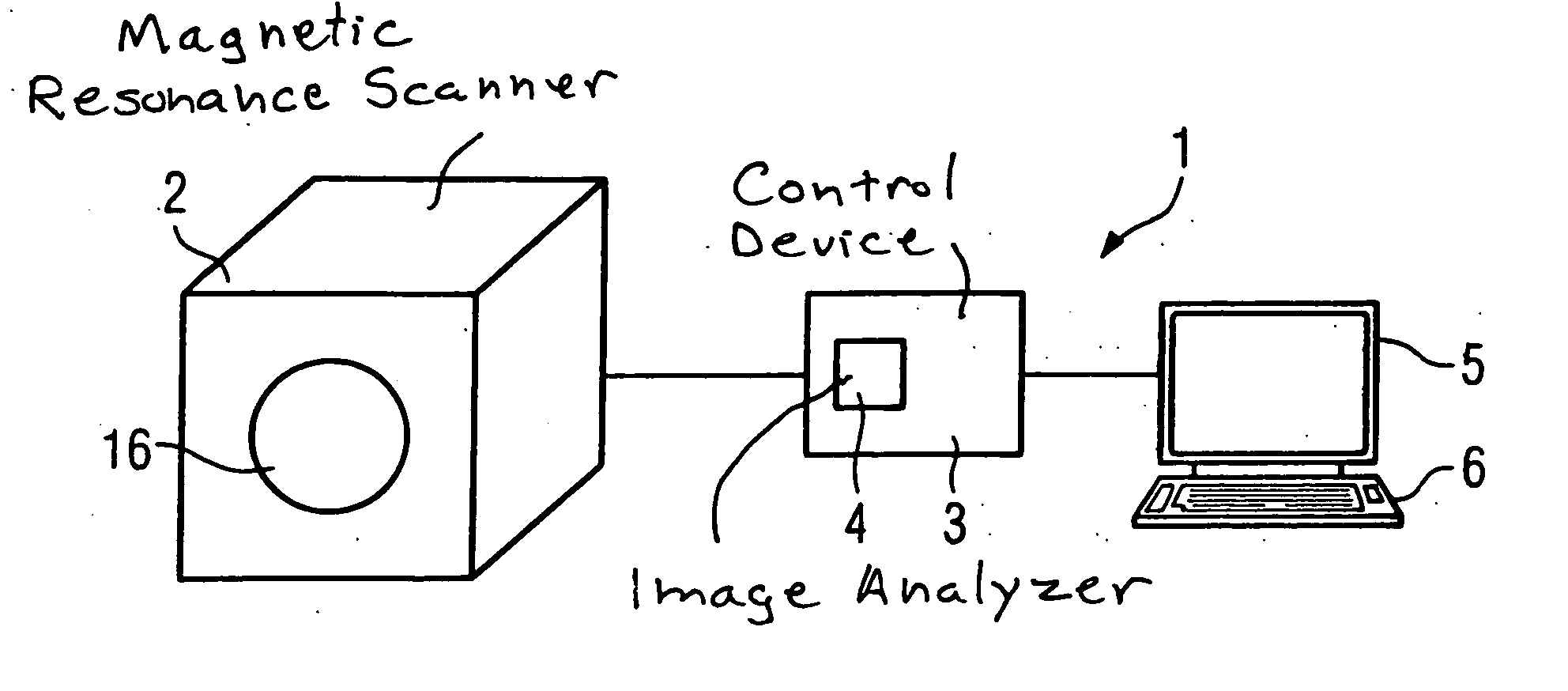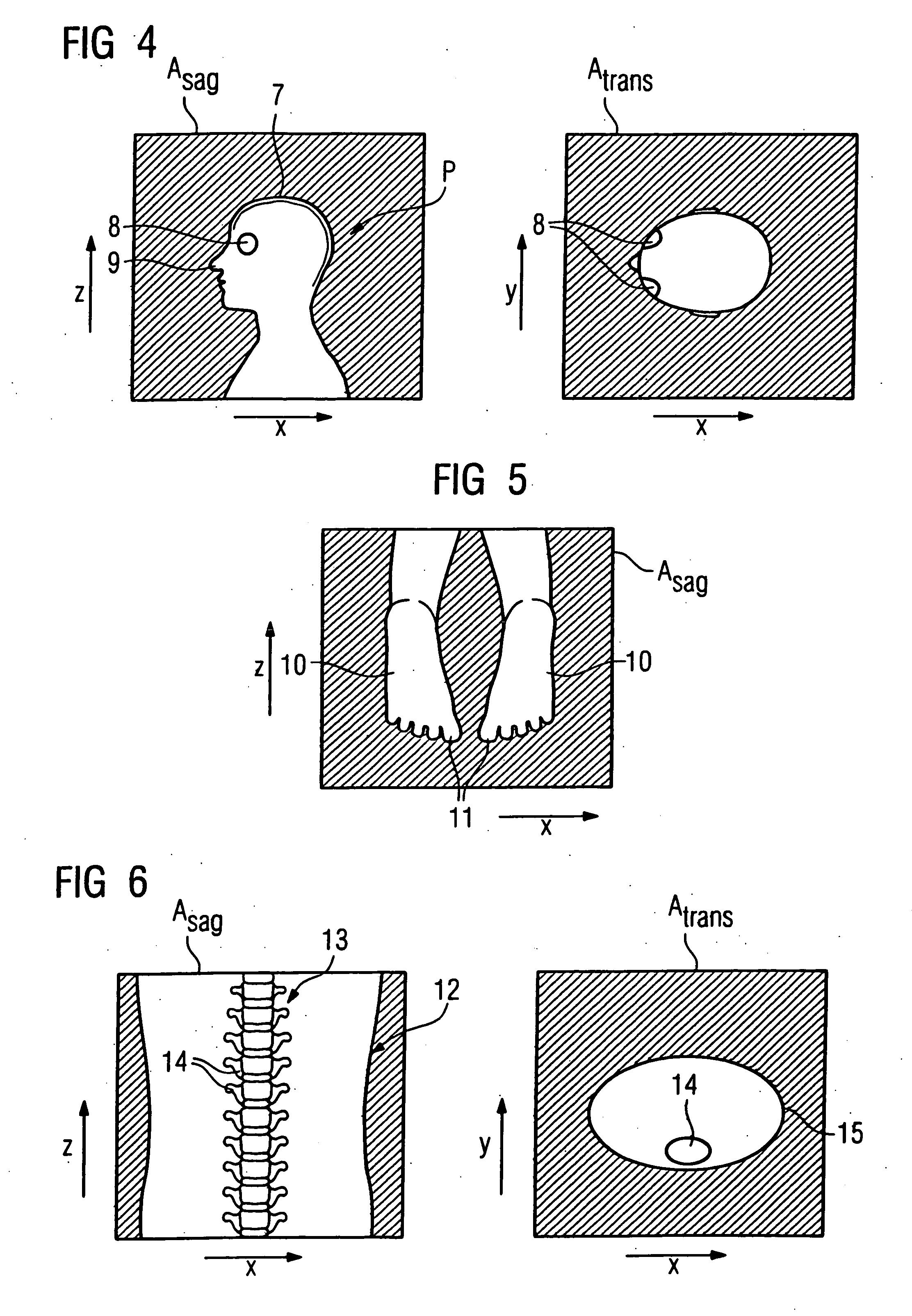Method for determination of the supported position of a patient in a magnetic resonance apparatus
- Summary
- Abstract
- Description
- Claims
- Application Information
AI Technical Summary
Benefits of technology
Problems solved by technology
Method used
Image
Examples
Embodiment Construction
[0019]FIG. 1 shows an inventive magnetic resonance apparatus 1, having a magnetic resonance scanner 2 as well as an associated control device 3 which, in the shown example, includes an image analyzer 4. A monitor 5 for output of acquired images as well as an input unit 6 in the form of a keyboard are provided.
[0020] In known magnetic resonance apparatuses, the patient is typically arranged on a patient bed and inserted into the tube 16 of the scanner device 2 with a horizontal alignment of the patient bed. The shown example is a closed magnetic resonance device 2; but open devices are also known in which two device halves are arranged one atop the other and separated from one another, such that the patient can also be inserted from the side.
[0021]FIG. 2 shows the tube 16 as well as a coordinate system of the magnetic resonance scanner 2 using which the fixed (with regard to this device coordinate system) alignment of the coronal, sagittal and transversal localizer images is explai...
PUM
 Login to View More
Login to View More Abstract
Description
Claims
Application Information
 Login to View More
Login to View More - R&D
- Intellectual Property
- Life Sciences
- Materials
- Tech Scout
- Unparalleled Data Quality
- Higher Quality Content
- 60% Fewer Hallucinations
Browse by: Latest US Patents, China's latest patents, Technical Efficacy Thesaurus, Application Domain, Technology Topic, Popular Technical Reports.
© 2025 PatSnap. All rights reserved.Legal|Privacy policy|Modern Slavery Act Transparency Statement|Sitemap|About US| Contact US: help@patsnap.com



